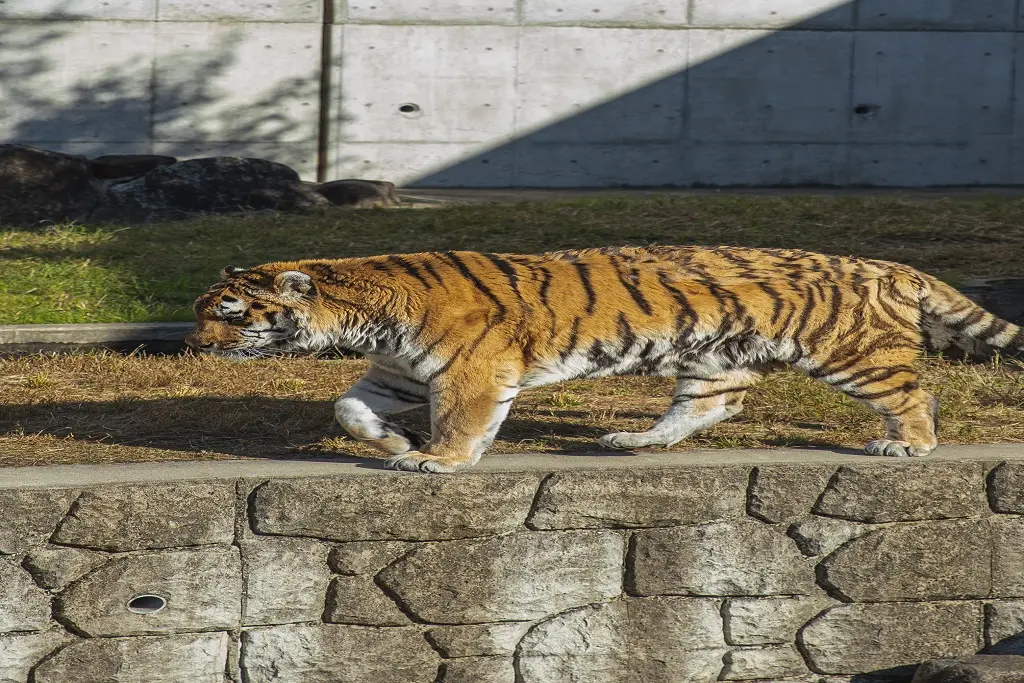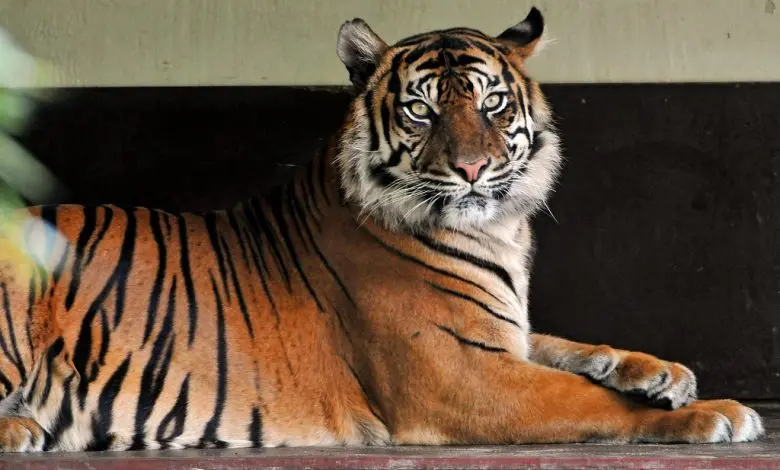The Java Tiger’s Struggle For Survival
The Java Tiger, Also Known As The Sunda Tiger, Is A Subspecies Of Tiger That Once Roamed The Islands Of Java And Bali In Indonesia.
Unfortunately, Due To Habitat Loss And Poaching, The Java Tiger Is Now Considered To Be Extinct In The Wild.
The Last Known Wild Individual Was Shot In 1972, And The Last Known Captive Individual Died In 1980.
The Java Tiger’s Struggle For Survival Is A Tragic Example Of The Consequences Of Human Expansion And Disregard For Wildlife Conservation.
This Paper Will Explore The History Of The Java Tiger, The Reasons For Its Decline, And Efforts To Conserve And Potentially Bring Back The Subspecies.
The Java Tiger Was Once A Vital Part Of The Ecosystem In Java And Bali, Playing A Role In Controlling Populations Of Prey Animals And Helping To Maintain A Balance In The Environment.
However, As Human Populations Grew And Deforestation Increased, The Tiger’s Habitat Was Severely Reduced.
The Tigers Were Also Hunted For Their Skin And Bones, Which Were Highly Valued In Traditional Medicine.
The Loss Of Both Habitat And Tigers Through Hunting Led To A Rapid Decline In The Java Tiger Population.
In Addition To Habitat Loss And Poaching, Disease Also Played A Role In The Decline Of The Java Tiger.
Tigers In Zoos And Captivity Were Often Kept In Poor Conditions And Had A High Rate Of Mortality Due To Disease.
The Last Known Wild Individual Was Shot In 1972, And The Last Known Captive Individual Died In 1980.
Despite The Java Tiger’s Extinction In The Wild, There Have Been Efforts To Conserve And Potentially Bring Back The Subspecies.
Genetic Research Has Revealed That The Java Tiger Is Closely Related To The Sumatran Tiger, And Some Scientists Believe It May Be Possible To Use Sumatran Tigers As A “Surrogate” For Breeding Java Tigers In The Future.
Conservation Organizations Are Also Working To Protect The Remaining Habitat In Java And Bali, In The Hopes That One Day The Java Tiger May Be Able To Roam The Islands Once Again.
The Java Tiger, Also Known As The Sunda Tiger, Is A Subspecies Of The Tiger That Is Native To The Islands Of Java And Bali In Indonesia.
The Java Tiger Is One Of The Smallest Subspecies Of Tiger, With Males Weighing Between 220-245 Kg And Females Weighing Between 140-165 Kg.
The Java Tiger’s Coat Is Typically Shorter And Less Thick Than That Of Other Tiger Subspecies.
The Java Tiger Is Critically Endangered, With An Estimated Population Of Fewer Than 250 Individuals.
The Main Threats To The Survival Of The Java Tiger Are Habitat Loss And Poaching.
The Java Tiger’s Natural Habitat Has Been Greatly Reduced Due To Human Population Growth And The Conversion Of Forest Land For Agriculture And Development.
Additionally, The Java Tiger Is Often Hunted For Its Body Parts, Which Are Used In Traditional Medicine And As A Status Symbol.
Conservation Efforts Are Currently Underway To Try To Save The Java Tiger From Extinction.
These Efforts Include Habitat Protection And Restoration, Anti-poaching Patrols, And Education And Awareness Campaigns.
However, The Future Of The Java Tiger Is Uncertain, And More Action Is Needed To Ensure Its Survival.
Historical Distribution Of The Java Tiger:
The Java Tiger Was Once Found Throughout The Islands Of Java And Bali, But Its Population Has Dramatically Declined Due To Hunting And Habitat Loss.
Today, The Java Tiger Is Only Found In A Few Isolated Pockets Of Forest On These Islands.
Ecological Importance:
Tigers, Including The Java Tiger, Play An Important Role In Maintaining The Balance Of Ecosystems.
They Are Apex Predators And Help Control Populations Of Herbivores, Which In Turn Helps To Maintain The Health Of The Forest And Its Biodiversity.
Current Conservation Efforts:
Several Organizations, Such As The Wildlife Conservation Society, Are Working To Protect And Conserve The Java Tiger.
These Efforts Include Habitat Protection, Anti-poaching Patrols, And Community-based Conservation Programs.
The Indonesian Government Has Also Established Protected Areas For The Java Tiger, But The Enforcement Of These Protections Is Often Inadequate.
Challenges In Conservation:
One Of The Main Challenges In Conserving The Java Tiger Is Addressing The Underlying Causes Of Habitat Loss And Poaching.
This Requires Addressing Issues Such As Poverty, Lack Of Education, And Weak Governance.
Additionally, There Is A Need For More Research To Better Understand The Java Tiger’s Ecology And Population Dynamics.
Ways To Support Conservation:
Encourage Your Audience To Support Conservation Efforts By Supporting Organizations Working To Protect The Java Tiger And Its Habitat, By Being Responsible Consumers And Not Buying Products Made From Tiger Parts, And By Spreading Awareness About The Importance Of Conserving This Species.

The Cultural And Traditional Importance Of The Tiger In The Java
In Java, The Tiger Holds A Significant Cultural And Traditional Importance. Historically, The Tiger Was Revered As A Powerful And Respected Animal, And It Played A Prominent Role In Many Traditional Stories And Beliefs.
In Traditional Javanese Culture, The Tiger Is Considered A Symbol Of Strength And Courage. It Is Also Seen As A Guardian Of The Forest And Is Associated With The Spiritual Realm. Tigers Were Also Often Depicted In Traditional Javanese Art, Such As Carvings And Paintings.
In Addition, The Tiger Has Long Been A Central Figure In Traditional Javanese Medicine. Many Traditional Healers Still Use Tiger Parts In Their Remedies, Believing Them To Have Powerful Healing Properties.
This Belief Has Led To The Hunting Of Tigers For Their Body Parts, Which Is A Major Threat To The Survival Of The Java Tiger.
It’s Important To Understand That Traditional Beliefs And Practices Are Deeply Ingrained And Hard To Change, However, Conservation Efforts Can Be Integrated With Traditional Beliefs And Practices.
For Example, Conservation Education Programs Can Be Designed To Incorporate Traditional Beliefs And Practices, And Traditional Healers Can Be Trained To Use Alternative, Non-tiger Products In Their Remedies.
It’s Worth To Mention That Today In Indonesia, Many People Are Aware Of The Importance Of Tiger Conservation And Actively Support Conservation Efforts.
In Conclusion, The Java Tiger Is An Important Part Of The Ecosystem And Plays An Essential Role In Maintaining The Balance Of The Forest.
Additionally, It Holds A Significant Cultural And Traditional Importance In Javanese Culture.
Conservation Efforts Are Currently Underway To Try To Save The Java Tiger From Extinction.
These Efforts Include Habitat Protection, Anti-poaching Patrols, And Education And Awareness Campaigns. However, The Future Of The Java Tiger Is Uncertain, And More Action Is Needed To Ensure Its Survival.
Efforts To Conserve Java Tiger Should Be Integrated With Traditional Beliefs And Practices, And Traditional Healers Can Be Trained To Use Alternative, Non-tiger Products In Their Remedies.
Additionally, Raising Awareness About The Importance Of Conserving This Species And Supporting Conservation Organizations Can Make A Big Difference In The Survival Of This Subspecies.
In Short, The Java Tiger Is A Unique And Valuable Species That Is Facing A Significant Threat To Its Survival.
It’s Our Responsibility To Take Action And To Ensure The Survival Of This Subspecies For The Future Generations.
EXCEllent